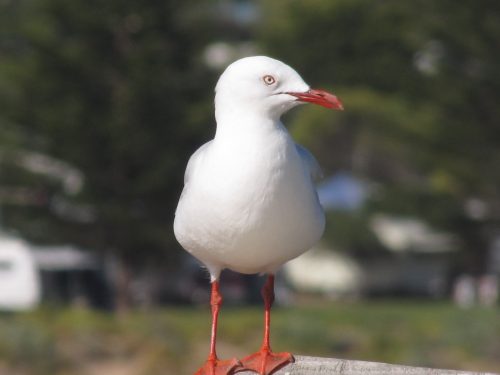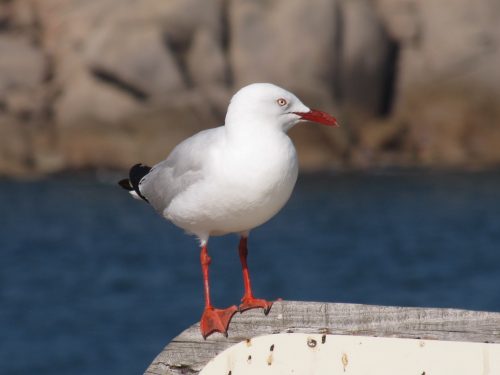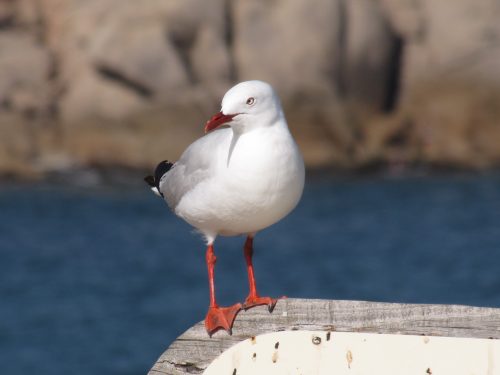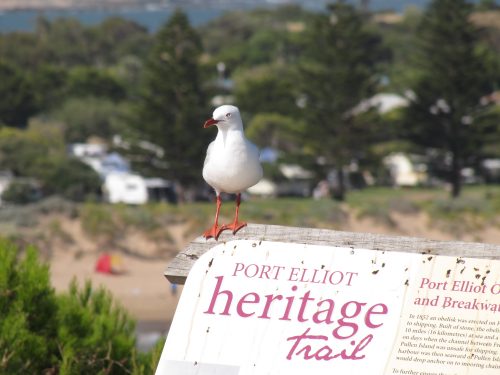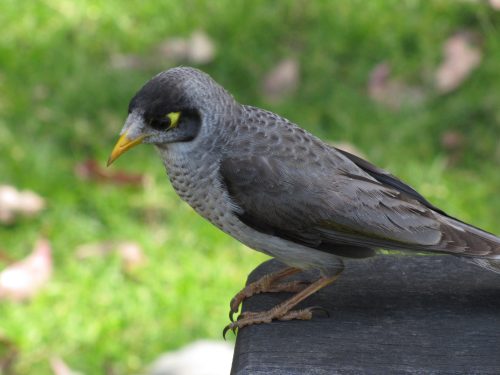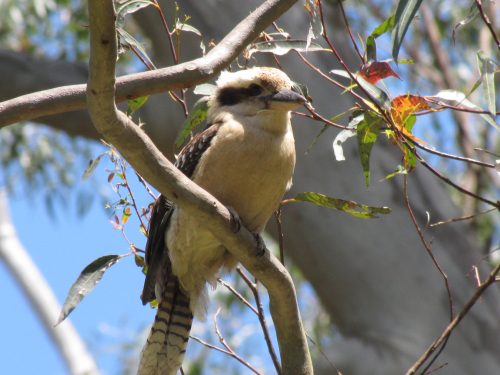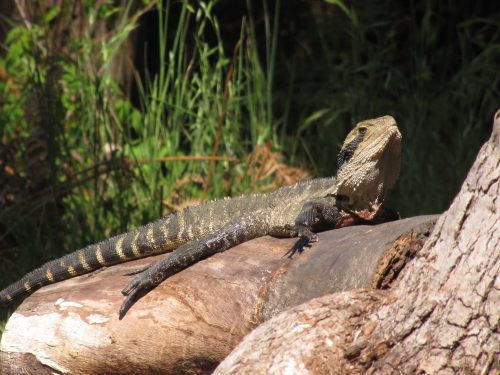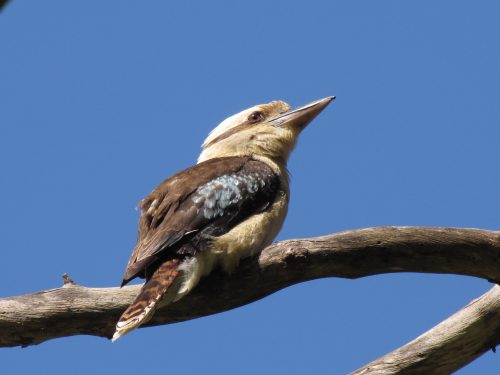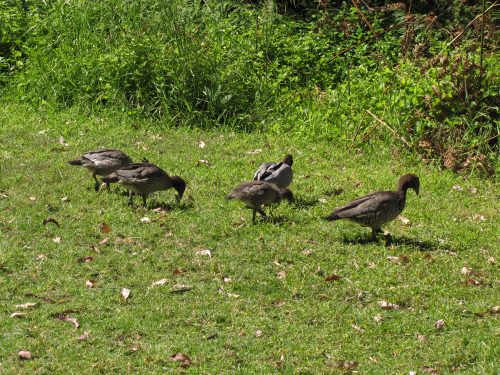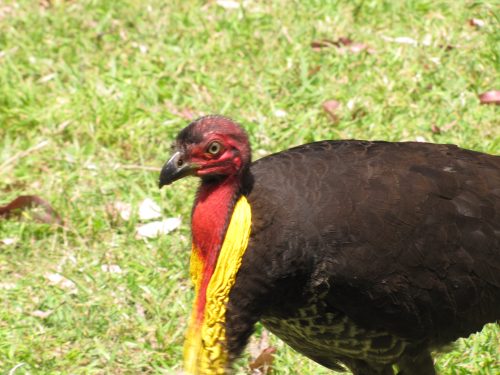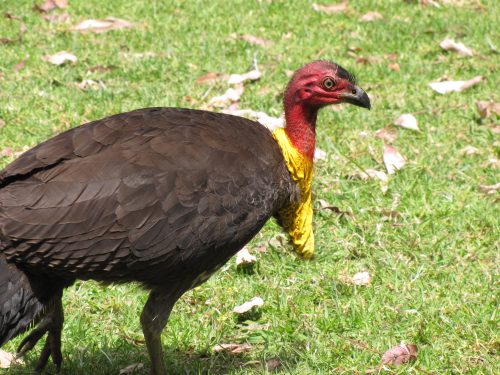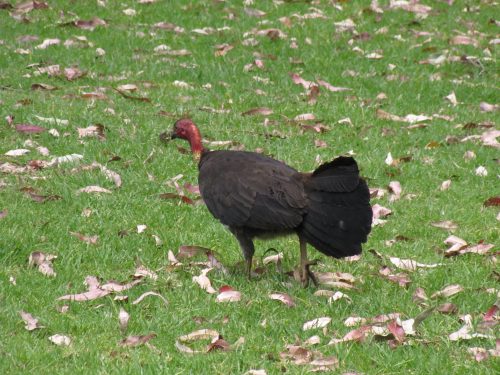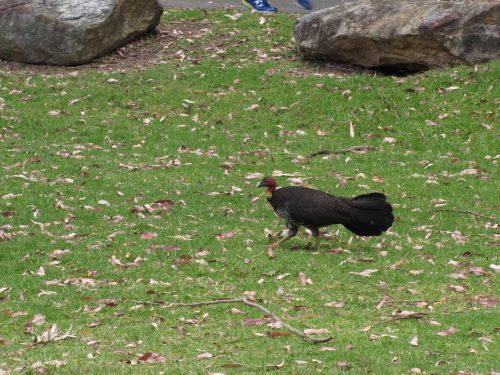Nice pose for a Silver Gull
Earlier this week my wife and I celebrated another anniversary. My – how the years have flown by. We always try to do something special for our anniversary and agreed that the weather was suitable for a long drive and a picnic, finished by dinner at a favourite restaurant. After an early morning chat on the phone with our grandchildren, we set off towards Milang, which is about 50 kilometres from our home. We stopped at the local bakery to buy our lunch, a Cornish pasty each, and a large lamington to share.
We took our lunch down to the shore of Lake Alexandrina and had a picnic lunch on the lawns there. The largest river system in Australia, The Murray-Darling Basin, flows into this large lake, which in turn empties into the Southern Ocean near Goolwa. While we ate our lunch we watched some children playing with their dogs and on the playground. I took note of the birds I could see or hear, but things were rather quiet on that front – until someone disturbed a large flock of very noisy Little Corellas nearby. I have often thought that I would like to stay in the local caravan park right next to the lake, but I concluded that you would not need an alarm clock; the parrots would see that you woke at dawn, or even at first light.
From Milang we drove on towards Goolwa and explored Hindmarsh Island – but I will write about that part another day. Later in the afternoon, we stopped at Horseshoe Bay, Pt Elliot. This small town on the south coast of the Fleurieu Peninsula is a popular holiday destination, being just over an hour’s drive from Adelaide. We stopped for a cuppa and some homemade biscuits in the car park at the lookout. I parked so that we had a great view over the bay. In South Australian history, this spot is quite important. Encounter Bay, which stretches for some distance to the south-east, was where English explorer Captain Matthew Flinders and the French explorer Nicolas Baudin met in April 1802.
While we were having our cuppa, a solitary Silver Gull settled on an interpretive sign just in front of our car. It obligingly posed for a series of photos which I am sharing here today. Silver Gulls are the most common gull found all around the coastline of Australia. It can also be seen far inland where suitable bodies of water exist, such as river systems, lakes, reservoirs and swamps. It can be very common in large numbers at rubbish tips, ovals, picnic grounds and beaches.
Further reading:
Wildlife of Lane Cove National Park
Over recent years, my wife and I have visited the Lane Cove National Park just west of Chatswood in the heart of Sydney. We try to get there whenever we visit family living in Artarmon nearby. Despite being in the heart of a bustling part of the city, this park not only preserves some remnant bushland for all to enjoy, it also boasts a good range of wildlife. I am particularly interested in the birdlife – hence this website. I also take an interest in other forms of wildlife, as well as the plant life, an interest which flows over from my wife.
On a visit there last October, I managed a few photos of some of the resident birds, as well as some other wildlife. A few weeks ago I shared a photo of two Long-necked Turtles here. I have also written about the local Sulphur-crested Cockatoos and the Australian Wood Ducks I saw in the park.
One of the very common birds in this area is the Noisy Miner, shown in the photo above. This individual landed on the picnic table alongside where we were sitting. I guess it was looking for a handout of human food, just like the local Laughing Kookaburras and Brush Turkeys. Noisy Miners are certainly the most common of the Australian honeyeaters in this part of Sydney.
I have noticed on all of our visits to this park that the Eastern Water Dragon is a very commonly observed reptile in the park. I think that we have seen many of these lizards on every visit to the park. The one shown in the photo below was quite friendly and unafraid, coming up quite close to where we were sitting.
Further reading:
Brush Turkeys up close
On many occasions here I have written about some of the birds I have seen and photographed while on visits to family in Sydney. One of our favourite places to visit while in Sydney is the Lane Cove National Park, just a short distance west of Chatswood in the northern suburbs, and only a ten-minute drive from my son’s home.
When we visit we usually take a picnic lunch, or if only going in the afternoon, we certainly take the makings for afternoon tea, including a few biscuits, or some fruit. We like to set up our folding chairs and make a cuppa, in a spot where we can see the river, as well as a good view of the trees. Such spots usually provide us with good birding as well.
If you stay in this park for a few hours or visit frequently, the chances of seeing a good range of local and visiting birds are very high. This park protects a large section of remnant scrubland. While there are roads and tracks through the park, as well as clearly defined picnic areas with barbeques, picnic tables and other public facilities, the vegetation left preserved gives the visitor a good impression of the natural environment as it existed before settlement in the late 1790s.
On this particular visit last October, my wife and I had a few hours leave from looking after our grandchildren. We set up our chairs in a good position and proceeded to eat our lunch. We had hardly started eating our sandwiches when we were robbed. Not only were the Laughing Kookaburras cheeky, so were the resident Australian Brush Turkeys, shown in the photos in this post.
Two of them came mooching around while we were having a post-lunch cuppa. They were obviously on the take and came up within a few centimetres of where we sat. We don’t feed birds that are supposedly wild. These individuals were behaving like they often get handouts of human food. Once they realised that we were not going to comply with their wishes, they skulked off elsewhere. They probably tried the same trick on other people enjoying a picnic.
Further reading:
- Lunch snatching birds
- Five reasons to love Brush Turkeys – from the ABC website
